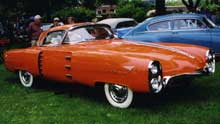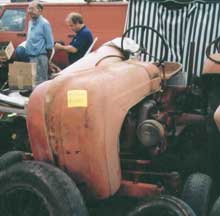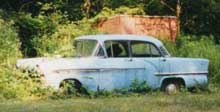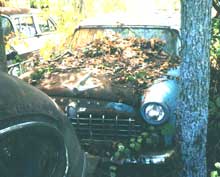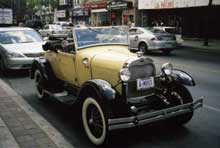Greenwich, Meantime
This weekend will be the first in June, which means it's Greenwich time. Greenwich Concours d'Elegance, the brainchild of Bruce and Genia Wennerstrom, will make its 12th appearance at Roger Sherman Baldwin Park in Greenwich, Connecticut.
Showcased will be a circle of European cars with American drive trains; once called "hybrids" in this day of alternative energy hybrids perhaps they're better called multicultural motorcars. On show will be the 1955 Lincoln Indianapolis, a study by Mario Boano in search of Ford business. He was successful to the extent that Henry Ford II bought the only car produced. Other multiculturals expected include the Franco-American Facel Vega and Italian-American Iso Grifo, which shares with its sibling Iso Rivolta an engine room with Corvette power.
Greenwich is a two day show, with Saturday devoted to thoroughbred American marques like Pope Toledo, DuPont or Crane Simplex. Sunday is Concours Europa, celebrating European cars like Lancia, Bentley and Amilcar. Among the competitors will be this 1938 Delahaye with luscious coupe body by Saoutchik, shown by Dragone Classic Motorcars. Prizes are awarded for age-appropriate costumes, and the waterfront location on Greenwich Harbor gives rise to Concours d'Marine, a competition for vintage yachts.
A Christie's auction of automobiles will begin Sunday at noon, with viewing throughout the day Saturday and on Sunday morning. A multitude of prizes will be awarded each day, beginning at 3 PM. More than 300 cars are expected over the two-day event, which will also feature automotive art galleries, a book alley and displays of prestige automobiles from area dealers and manufacturers.
The Concours benefits disaster relief agency Americares and is open from 10 AM to 5 PM each day. Roger Sherman Baldwin Park is located at 100 Arch Street in Greenwich, Exit 3 of Interstate 95. C'mon down!

